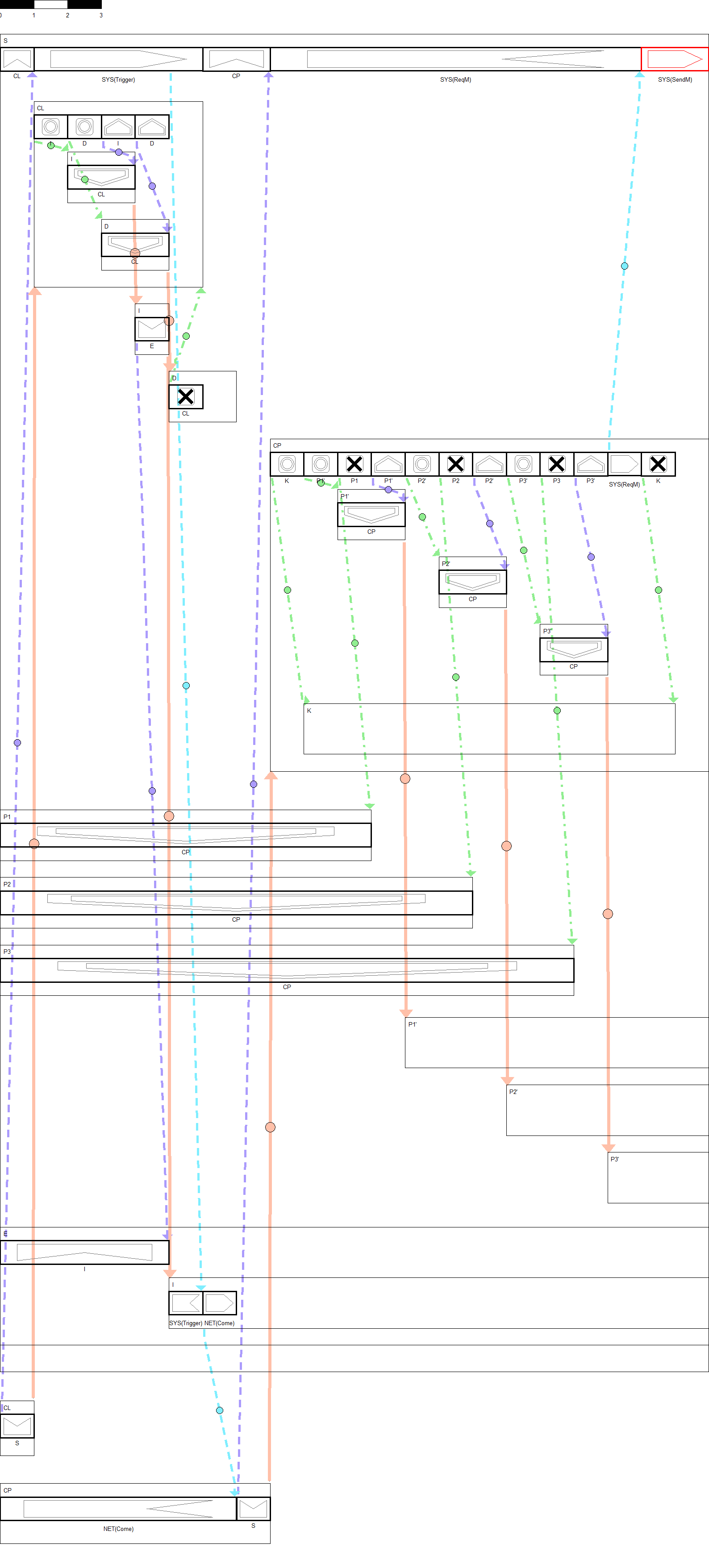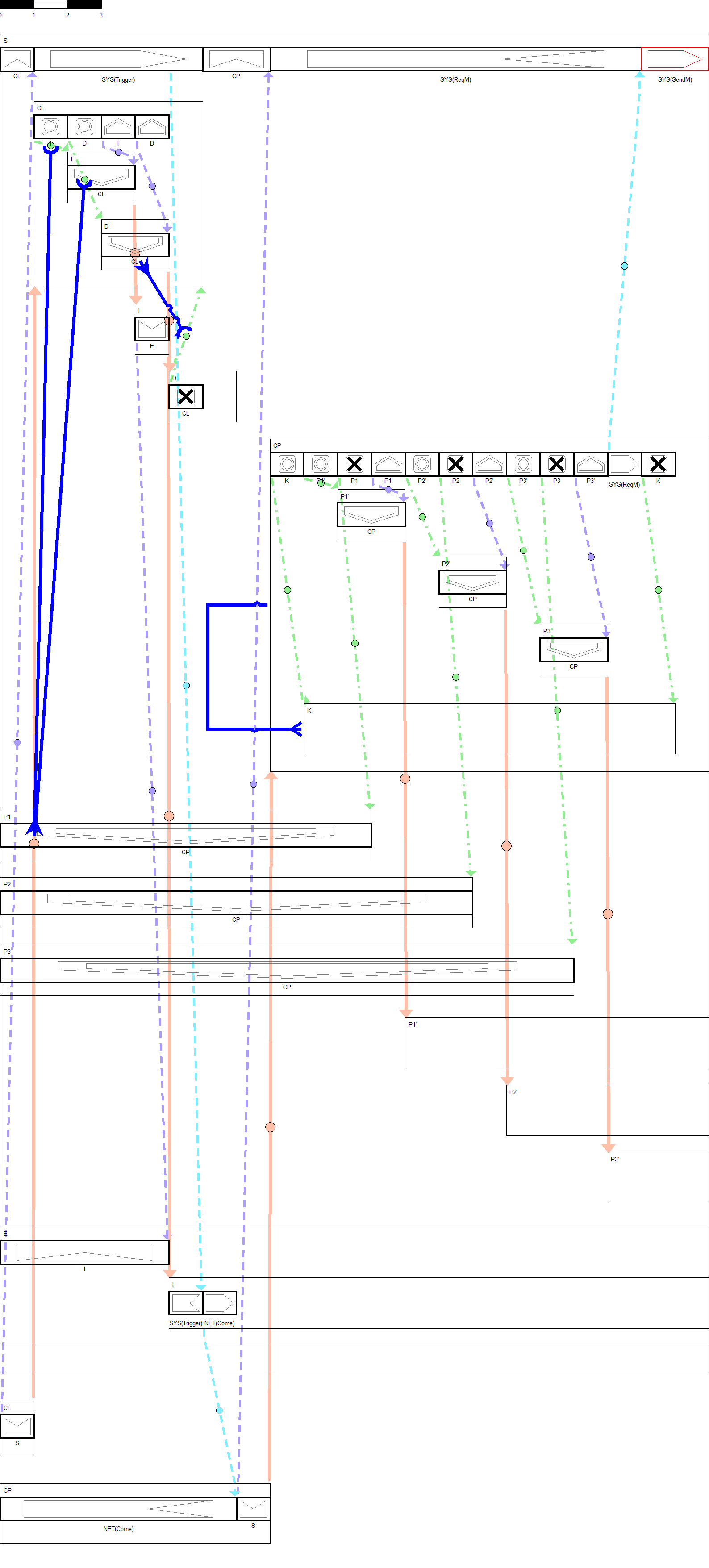SAVE/ADOxx
글 수 8
2016.06.29 14:39:49 (*.70.193.131)
19980
1. CrytoLocker
- A ransomware trojan
- Targeted computers running Microsoft Windows.
- First observed by Dell SecureWorks in September 2013 (CryptoLocker).
- Principle
- It breaks into the system,
- Infects specific files, and
- Demands ransom for recovery from the infection.
2. Configuration: Processes in CryptoLocker
System consists of two parts:
S and its internal components:
S contains E, to search files in the system.
Other various processes.
The other to give permission for an external process to enter S.
- Other processes except E have the same priority of m.
3. δ-Calculus
- System∷=S_((0) ) [E_((0) )∥P1_((m) )∥P2_((m) )∥ P3_((m) )∥…∥Pn_((m) ) ]〈SYS,NET〉∥(F in)^∞
- F∷=P1∥P2∥P3∥…∥CL∥CP∥…
- CL∷=in_t1 S.new I.new D.nil
- D∷=kill CL.exit
- I∷=(in) ̅_t2^p E.W
- W∷=nil△_∞ (nil,nil,SYS(trigger).NET((download) ̅ ).W)
- CP∷=NET(download).in_t3 S.new K.(get) ̅_t4^p K.(get_tj^p Pi.new Pi^′.kill Pi)^n.(SYS.((ReqM) ̅ ).SYS(sendM))△_t5 (OP,kill K.exit,nil)
- OP∷=(get_tk^p Pi^′.new Pi.kill Pi^′ )^n.exit
4. Operational Requirements
1) After
CL
enters S, CL
creates I and D
processes.
2) D terminates
CL and
terminates itself.
3) I enters
E
forcibly by priority-based asynchronous movement, becomes
a Hide
process of E, and
waits in the W state.
4) f Trigger is
met by a specific action of S, W
downloads CP by a
port of S, NET.
5) When CP is
downloaded and entered in S, it creates a key outside of S and
brings the key in.
6) CP
brings other processes in it, creates the enciphered version of the processes
with the key, and forcibly terminates the original version of the processes.
7) Once
the enciphering is done, demand ransom through the system S with
a deadline.
8) If
the ransom is paid in time, the enciphering is terminated and all the
enciphered processes are recovered.
9) If
the ransom is not paid in time, CP deletes the key and terminates
itself.3. ITL View

4. ITS View


5. Execution Model

6. Simulation/GTS
1) Normal Case


2) Abnormal Case: Deadlock


7. GTS Logic
1) Requirements
- The (new I) and (new D) actions of CL should be executed after the (in S) movement action of CL.
- δ_(CL,S)<CL:(new I)∧CL:(new D)
- CL:(in S)<CL:(new I)∧CL:(new D)
- The (kill CL) action of D should be executed after the movement of I, that is, the (put I) movement action of CL.
- δ_(CL,I)<D:(kill CL)
- CL:(put I)<D:(kill CL)
- K should be in CP all the time.
- K⊂CP
2) Normal Case


3) Abnormal Case


- CL_ITL_TOOL.png (114.6KB)(123)
- CL_ITS_TOOL1.png (115.8KB)(128)
- CL_ITS.png (43.5KB)(116)
- CL_EM.png (28.1KB)(118)
- Abnormal-norel-tool.png (135.1KB)(777)
- Abnormal-noreq.png (62.7KB)(118)
- Deadlock1-norel-tool.png (136.0KB)(125)
- Deadlock1-noreq.png (64.1KB)(130)
- Abnormal-full-tool.png (149.6KB)(126)
- Abnormal-full.png (65.4KB)(117)
- Deadlock1-full-tool.png (150.4KB)(122)
- Deadlock1-full.png (66.8KB)(122)
